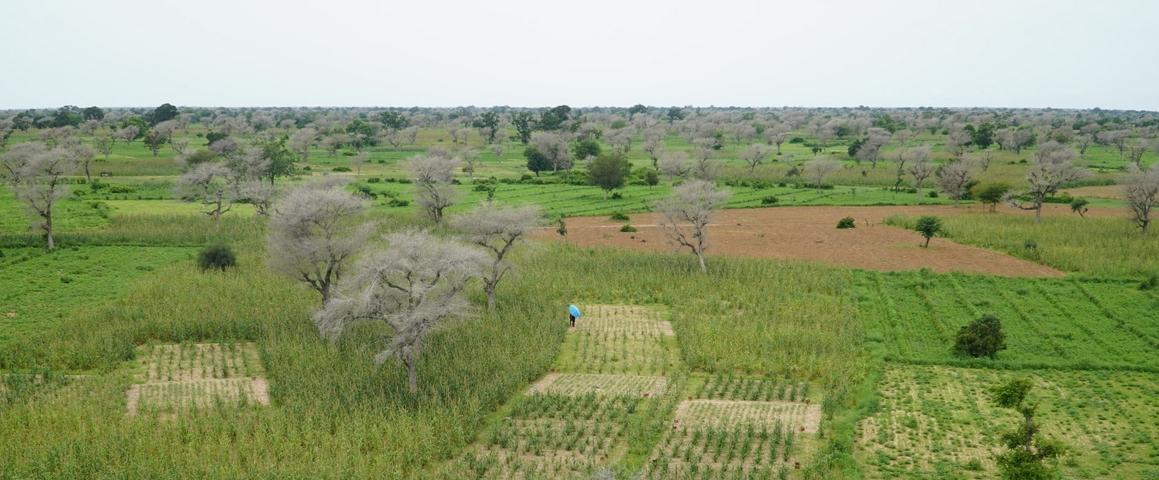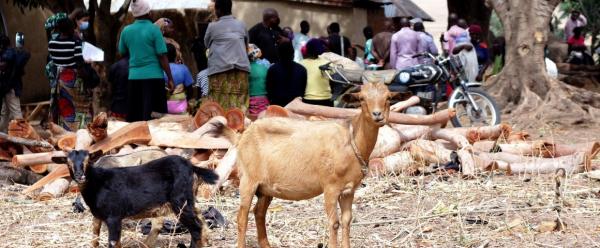Results & impact 28 October 2025
- Home
- CIRAD news
- News
- Agroforestry and IPCC carbon coefficients
IPCC to take greater account of carbon storage by agroforestry systems

Agroforestry in the Sahel during the wet season © C. Dangléant, CIRAD
Agroforestry systems have the capacity to store large amounts of carbon. But how much exactly? Researchers from CIRAD and the FAO set out to answer the question. They reviewed the available literature and compiled coefficients for carbon storage in the soil and in biomass for different climates, regions and types of agroforestry systems.
Coefficients that will be used in the IPCC carbon accounting system
"This is an important step towards recognition of agroforestry in the IPCC carbon accounting system", says Rémi Cardinael, an agronomist-soil scientist with CIRAD who was the study's lead author.
Agroforestry systems were previously classed in the "perennial crops" category, along with vines, orchards and monospecific perennial plantations such as rubber, banana, cocoa or coffee. They are actually completely different, but in 2006, there was not sufficient published data to establish specific coefficients for each type of system. Only overall coefficients were proposed for aboveground biomass.
The new coefficients have been included in the improved 2006 IPCC National GHG Inventory Guidelines. The final version is to be adopted at a plenary session of the panel in May 2019.
Taking greater account of the diversity of agroforestry systems
Rémi Cardinael and his colleagues from the FAO deciphered 122 articles covering 542 observations in all. They calculated coefficients for carbon storage in the soil and in aboveground and belowground biomass for different climates and regions, and for eight main types of agroforestry systems: alley cropping or tree-based intercropping, fallow, hedgerows, multistrata agroforests, parklands, shaded perennial crop systems, silvoarable systems and silvopastoral systems.
"These coefficients per climate and major world region are a very significant step towards taking greater account of the diversity of agroforestry systems", Rémi Cardinael stresses. "However, they still need fine-tuning, so we encourage national governments to synthesize or gather local carbon storage data."
What impact will land use change have on carbon stocks?
Soil organic carbon stocks are highly sensitive to land use change. "A given agroforestry practice can have either a positive or a negative effect on soil carbon, depending on the previous type of land use", Rémi Cardinael explains. "For instance, setting up an agroforestry system on forest land will generally reduce soil carbon stocks (albeit to a lesser extent than if the forest was converted to cultivated land), "whereas the same type of system would have a highly beneficial effect if set up in a cultivated plot. This is why the storage coefficients proposed vary according to three main types of previous use: forest, cropland, and grassland."
Improving carbon impact assessment tools
These carbon storage or loss rates after land use changes could be used to improve carbon balance tools. An "agroforestry" module is currently being developed for EX-ACT, a tool developed by the FAO for ex ante assessments of project GHG emissions.
Growing crops under trees to withstand climate change
Agriculture is responsible for GHG emissions, impacted by climate change, and part of the solution to climate change. In the light of this, agroforestry is one of the possible solutions to the climate challenge, and is notably being promoted by the 4per1000 "Soils for food security and climate" initiative. In addition to responding to the current biodiversity crisis, it has numerous advantages in terms of protecting soils and boosting their fertility, and also serves to:
- mitigate global warming by storing more carbon than conventional cropping systems,
- adapt to climate change by limiting crop stress, notably heat stress. Diversified production also enables farmers to buffer any climate shocks.



























